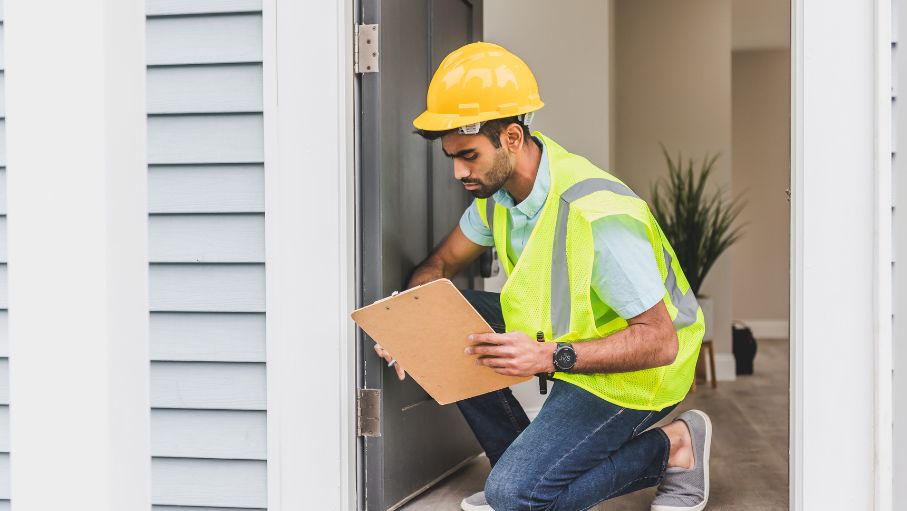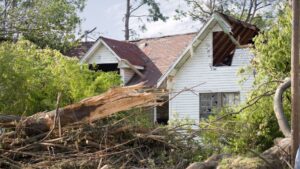Buying a home is an exciting milestone, but it can also be overwhelming. As a first-time buyer, the home inspection process can feel like a maze.
However, a proper inspection is crucial for ensuring that the home you’re about to purchase is safe, functional, and worth your investment.
In this article, we’ll walk you through an essential home inspection checklist to help you make a confident and informed decision.
Why a Home Inspection is Important
Before we dive into the checklist, let’s quickly review why home inspections are so important. A home inspection helps you uncover hidden issues that may not be visible during a casual walkthrough. This allows you to:
- Avoid unexpected repair costs
- Understand the true condition of the property
- Negotiate a fair price with the seller
- Feel confident in your purchase
Now that you know why inspections matter, let’s look at the key areas you need to inspect.
1. Foundation and Structure
The foundation is the backbone of any house. A faulty foundation can lead to costly repairs, and even affect the safety of the home. Here’s what to look for:
- Cracks in the walls or foundation: Small cracks can be normal, but large or growing cracks may indicate serious structural issues.
- Uneven floors or doors: If doors don’t close properly or floors slope, it could be a sign of a foundation problem.
- Water damage: Damp or wet spots can suggest water leakage or drainage issues around the foundation.
Pro Tip: If you spot any major issues, consider getting a specialist to inspect the foundation further.
2. Roof and Attic
The roof protects you from the elements, and the attic plays a key role in insulation and ventilation. Here’s what to check:
- Roof condition: Look for missing or damaged shingles, rusted flashing, or signs of wear around vents and chimneys.
- Attic insulation: Ensure the attic has sufficient insulation to keep your home energy-efficient.
- Ventilation: Poor attic ventilation can lead to mold and moisture problems, so ensure there’s adequate airflow.
If the roof is nearing the end of its lifespan, you might need to negotiate a replacement or discount.
3. Plumbing and Water Systems
Your plumbing system is essential for daily life, so make sure it’s in good shape. Look for the following:
- Water pressure: Turn on the faucets to check the water pressure. Low pressure can signal a problem with the pipes.
- Leaky pipes: Check under sinks and around water fixtures for any signs of leaks.
- Water heater: Make sure the water heater is functioning properly and check for any rust or leaks.
Pro Tip: If you’re unsure about the plumbing, hire a professional plumber to inspect the system.
4. Electrical Systems
A faulty electrical system can be a major safety hazard. Here’s what to look for during your inspection:
- Outlets and switches: Check that all outlets and light switches are working. Non-functional outlets could be a sign of wiring problems.
- Circuit breakers: Ensure the circuit breaker panel is up to code, with no exposed wires or outdated fuses.
- Visible wiring: Avoid homes with exposed or frayed wires, as this could be a fire hazard.
5. HVAC System (Heating, Ventilation, and Air Conditioning)
The HVAC system keeps your home comfortable year-round. Make sure it’s functioning efficiently by checking:
- Air filters: Ask when the air filters were last replaced. Dirty filters can reduce air quality and make the system less efficient.
- Heating and cooling: Test the heating and cooling system to ensure it’s working well.
- Ductwork: Check for any visible damage to ducts that could lead to leaks and higher energy bills.
6. Windows and Doors
While windows and doors may seem like simple features, they play an important role in energy efficiency and security. Look for the following:
- Proper sealing: Ensure windows and doors are sealed properly to avoid drafts and water leaks.
- Locking mechanisms: Check that all windows and doors lock securely to keep the home safe.
- Glass condition: Inspect the glass for cracks or fogging, which could indicate issues with insulation.
7. Interior and Exterior Walls
The condition of the interior and exterior walls can tell you a lot about the home’s overall condition. Here’s what to check:
- Cracks and damage: Look for cracks, holes, or water stains that could indicate structural or water damage.
- Mold and mildew: Check for any signs of mold or mildew, especially in damp areas like bathrooms or basements.
8. Pest Infestation
Pests can cause significant damage to your home, so it’s essential to check for signs of an infestation. Look for:
- Rodent droppings: Check basements, attics, and under cabinets for signs of rodents.
- Insect damage: Look for wood damage that could indicate termites or carpenter ants.
9. Safety Features
Ensure that the home has necessary safety features in place, such as:
- Smoke detectors: Check that smoke detectors are installed in key areas, like hallways and bedrooms.
- Carbon monoxide detectors: Especially important if the home has gas appliances or a fireplace.
- Handrails and stairs: Ensure all stairways have secure handrails and that stairs are in good condition.
10. Landscaping and Exterior
The exterior of the home sets the tone for the property and contributes to its value. Here’s what to look for:
- Drainage: Make sure the yard slopes away from the house to prevent water from pooling around the foundation.
- Driveway and sidewalk: Check for cracks or uneven surfaces that could be a tripping hazard.
- Fencing and gates: Inspect the condition of fences and gates to ensure they are secure and functional.
FAQs
Q: How much does a home inspection cost?
A: On average, a home inspection can cost anywhere from $300 to $500, depending on the size and location of the home. It’s a small price to pay for peace of mind.
Q: How long does a home inspection take?
A: A standard home inspection typically takes 2-4 hours, depending on the size and condition of the home.
Q: Should I attend the home inspection?
A: Yes! Attending the inspection gives you the opportunity to ask questions, get a first-hand look at any issues, and learn more about the home’s condition.
Q: What happens if the inspection reveals issues?
A: If significant problems are discovered, you can negotiate with the seller for repairs, a price reduction, or even walk away from the deal.
Final Thoughts
A home inspection is an essential part of the home-buying process that gives you a clear understanding of the property’s condition. By following this checklist, you can avoid costly surprises and make a more informed decision. Remember, always hire a certified home inspector to ensure a thorough evaluation.
For more tips on the home-buying process, check out our guide on Cheap Houses For Sale In San Antonio By Owner, Tiny Houses For Sale In San Antonio
.










